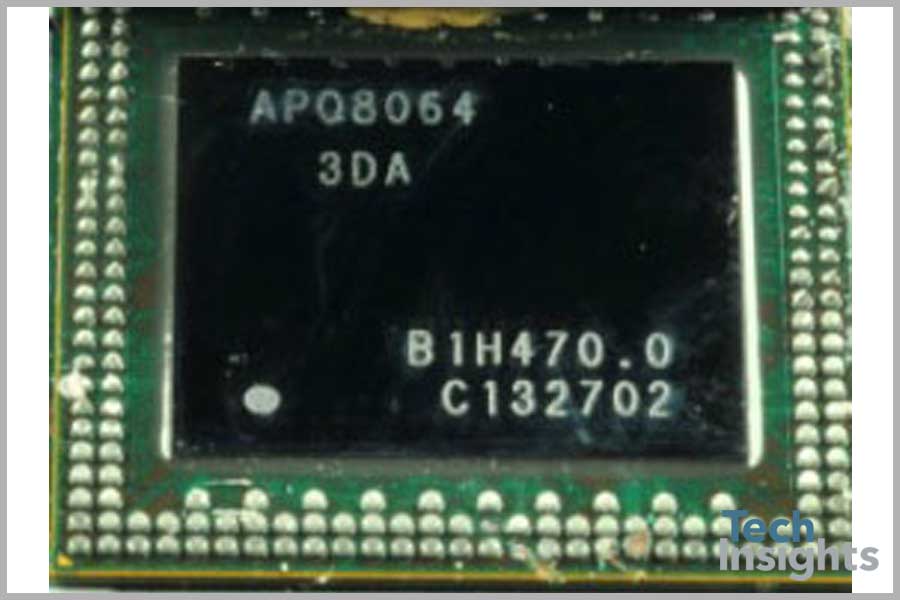Posted: April 20, 2014
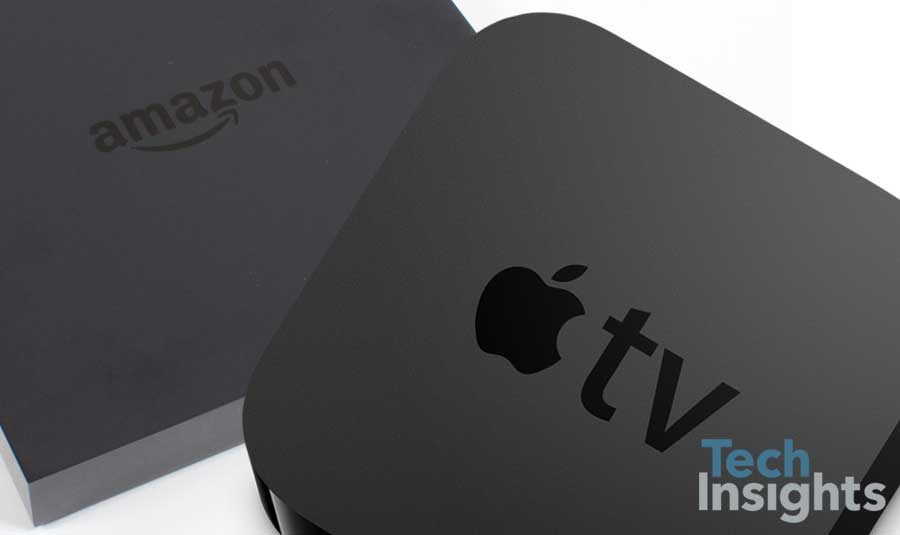
Apple TV vs Amazon Fire TV Teardown
The Apple TV (3rd generation) model A1427, was released in March 2012 and torn down and a Bill of Materials was generated in June 2012. At the time, the BOM was estimated by TechInsights™ Teardown.com at $70.30. Roughly 2 years later, in April 2014, Amazon released their Fire TV, which was torn down in May 2014 with a cost estimate landing at $92.99. The cost comparison below compares costs at the time of their respective teardowns. Be advised that in the two years since Apple released their TV, the BOM for that unit is likely to have dropped since our initial analysis.
Both units have a retail price of $99. From a cost at launch standpoint as shown in Figure 1, Apple appears to be making a better profit at nearly $30 compared to Amazon at $6. This ignores and channel margin, which is likely ~20%. An advantage of Amazon is that it sells the lion™s share of its product so it limits payments additional reseller margins. But make no mistake, neither company is looking for unit profits, both are seeking to continually unleash the profits of streaming media services to the growing number of connected consoles worldwide.
Being a 2014 product, it is not surprising to find that the Fire TV comes with a faster processor, more SDRAM memory, MIMO dual-band WiFi, 5.1 surround sound and a Bluetooth driven remote for non-line-of-sight control. The device also comes with a very interesting new IC from SiTime, more about them in a coming blog.
Key Design Wins Include:
Processor: Qualcomm gets the processor socket with a 1.7GHz Quad-core Snapdragon S4 incorporating an Adreno 320 graphics processor along with the associated Qualcomm PMM8920 power management IC.
WiFi/Bluetooth: Qualcomm also wins with the Qualcomm Atheros QCA6234 dual-band 2x2 MIMO WiFi 802.11a/b/g/n & Bluetooth 4.0 part.
SDRAM Memory: Micron provides the 2 Gigabytes of DDR2 SDRAM memory onboard that is stacked on top of the Qualcomm APQ8064T processor.
NAND Flash Memory: For non-volatile memory, Toshiba provides an 8 Gigabyte multi-chip memory part.
Bluetooth Remote: The Bluetooth connected remote is powered by a Texas Instruments M430F5435A mixed signal microcontroller. Also found on the remote is a Texas Instruments CC2560 single chip Bluetooth IC, an Audience eS305 voice processor and a Bosch Sensortec BMA150 3-axis accelerometer.
Cost stackup between Apple TV and Amazon Fire TV
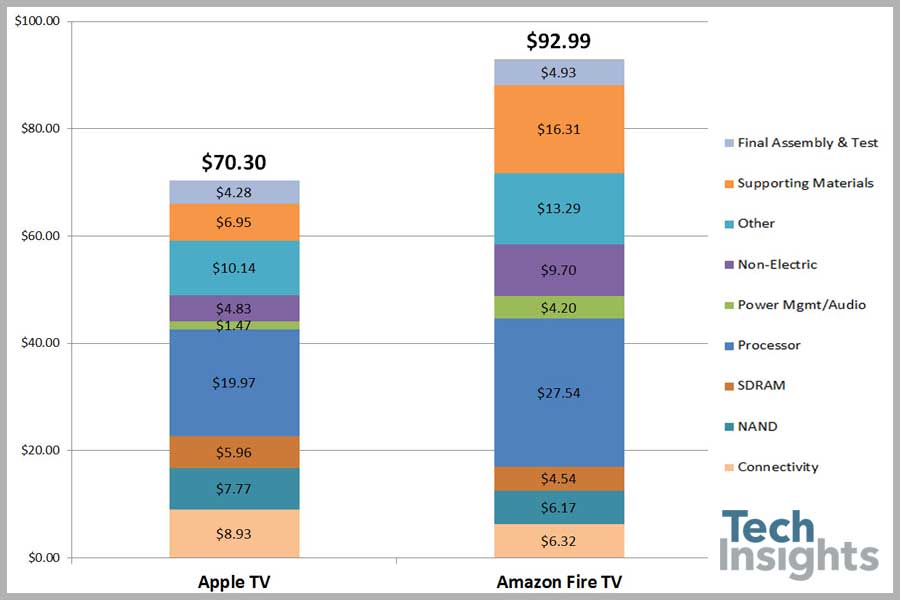
Connectivity
At the time of launch, Apple TV™s connectivity, which included WiFi, Bluetooth, HDMI and 10/100 Ethernet, and had a higher initial cost than the Fire TV. But leveraging new technology from the past 24 months, the Fire TV incorporates a much faster and more expensive Qualcomm Atheros QCA6234 MIMO WiFi solution.
MIMO is important because it allows the simultaneous use of two or more transmit/receive channels to boost throughout data rates. The QCA6234 is a 2 x 2 (2 transmit/2 receive) MIMO part.
While Apple TV contained a Broadcom BCM4330 based Universal Scientific Industries (USI) WiFi/Bluetooth module that did not contain MIMO, Broadcom has not been sitting still. Their BCM4354 WiFi/Bluetooth/FM radio part is 2 x 2 MIMO capable and now in production. It is likely that the BCM 4354 or a module containing it will be found in the next generation of Apple TV.
Non-Volatile Memory (NAND)
Both units come with 8 GB of MLC NAND Flash. While Teardown.com priced the Apple TV memory at $1.60 (higher than Fire TV) current costing for the same memory is less expensive. Both Apple and Amazon source their NAND flash from Toshiba, which, barring any volume pricing implications, should have them at cost parity at a given point in time.
Volatile Memory (SDRAM)
The Apple TV comes with 512 MB DDR2 SDRAM while the Fire TV came equipped with 2GB DDR2 SDRAM. The cost, which again is at time of teardown, has the Apple TV™s cost approximately $1.50 higher than Fire TV at $4.54. In 2014, we expect Apple to be paying closer to $2.40 for this memory part. This would make it $2.00 cheaper than Fire TV™s memory.
It is notable to remark that be going from 512 MB to 2 GB that Amazon will have faster response time to new apps as well as receive a boost to streaming and playing the latest HD content. This jump further amplifies the readily available memory IC choice by product vendors today.
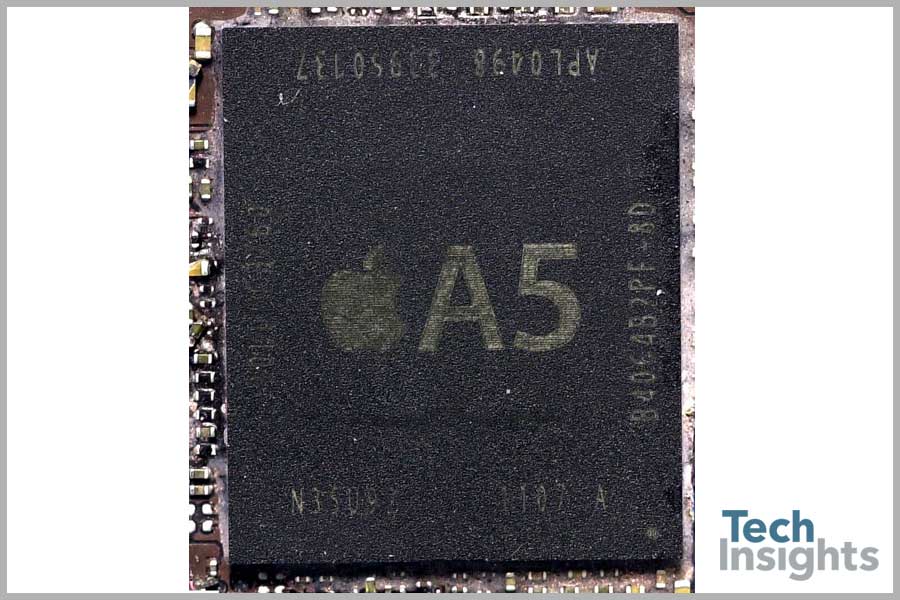
Processor
Processor
The applications processor in the Apple TV is a 1GHz, dual-core (one core is disabled) is a 2nd generation A5 processor. Analysis on this chip was done by TechInsights and can be found here. It is a die shrink version of the processor first seen in the Apple iPhone 4S. The Fire TV runs on a Qualcomm 1.7 GHz quad-core Krait 300 processor with an Adreno 320 graphics processor. The Fire TV provides more horsepower with an approximate $7.50 premium. However, if we assume Apple has been able to shave off cost from their A5 over the past two years, the premium would increase to about $10.00.
Power Management and Audio
Apple™s 338S1040 (made by Dialog) power management and audio IC is significantly cheaper than Fire TV™s Qualcomm PMM8920 IC. Apple™s $1.47 power management IC is a single die part with smaller area compared to Qualcomm™s $4.20 two die IC.
Non-Electric Parts
Based on inputs from our customers and industry expertise, the costing methodology we used to estimate the Apple TV has significantly changed since we costed it. At first glance, it appears that Apple has a more cost efficient design, but when employing the new model to those parts, Apple™s non-electric parts increases to $8.29, compared to $9.70 for the Fire TV. A description of the costing methodology change is at the end of the article.
Other Parts
At the time of launch, Apple™s other parts came in at about $10. We expect that the Apple TV would have dropped into the $9.50 range by this point due to manufacturing efficiencies and a decline in the cost of these parts by various suppliers. Fire TV currently has $13.29 worth of other parts. The 10 layer main circuit board is approximately $3.50 more expensive than its Apple counterpart and accounts for the bulk of the cost difference.
Supporting Materials
Without the remote controls, Apple TV™s supporting materials comes out to $2.80 while Fire TV™s supporting materials comes out to $3.12. So, there are no major differences here. However, Apple™s IR remote is costed at $4.15 while the Fire TV™s Bluetooth remote comes in at $13.19. The Fire TV™s remote has a $1.55 Texas Instruments mixed signal microcontroller, a $0.92 Bluetooth solution, a $0.81 3-Axis accelerometer, a $0.59 voice processor, two microphones and more. All told, it is a more costly, more capable remote.
Fire TV Bluetooth Remote
The Bluetooth remote is powered by a Texas Instruments M430F5435A microcontroller. It contains a Texas Instruments CC2560 Bluetooth IC, a Bosch Sensortec eS305 3-axis accelerometer, Audience eS305 voice processor and two MEMS microphones.
The Voice processer is a very interesting innovation from Amazon because it moves the interaction with the console into the growingly popular voice control world of SIRI. Further from a bundled services perspective Amazon is using voice to drive people to its search engine, thus allowing it to further present and promote its products and services.
The accelerometer does not appear to have a documented usable functionality associated with it at the present time. It may be usable for certain games, but this has yet to be verified.
Final Test and Assembly
Along with better capability come higher assembly and test costs. The Fire TV, with its Bluetooth based remote, MIMO WiFi and more, requires an additional $0.65 in this area.
Other Observations
Both units are small boxes of comparable size. When you open them up, Apple chose to embed a 2.5 Watt power supply in the box while Amazon used a whopping 16 Watt external power supply. Amazon™s power supply is so large that it blocks access to an adjacent wall outlet.
In order to fit the power supply inside the Apple TV, Apple had to increase the component density on their circuit board. They also managed to do so with an 8 layer board that was estimated at $3.12. Amazon on the other hand, used a larger, more expensive 10 layer board that cost $6.53 resulting in a cost difference of $3.41 for the board. It is worth noting that the Fire TV board in figures 4 and 5 have a significant amount of green space. Had they packed their electronics more densely, they would have had a smaller, cheaper board.
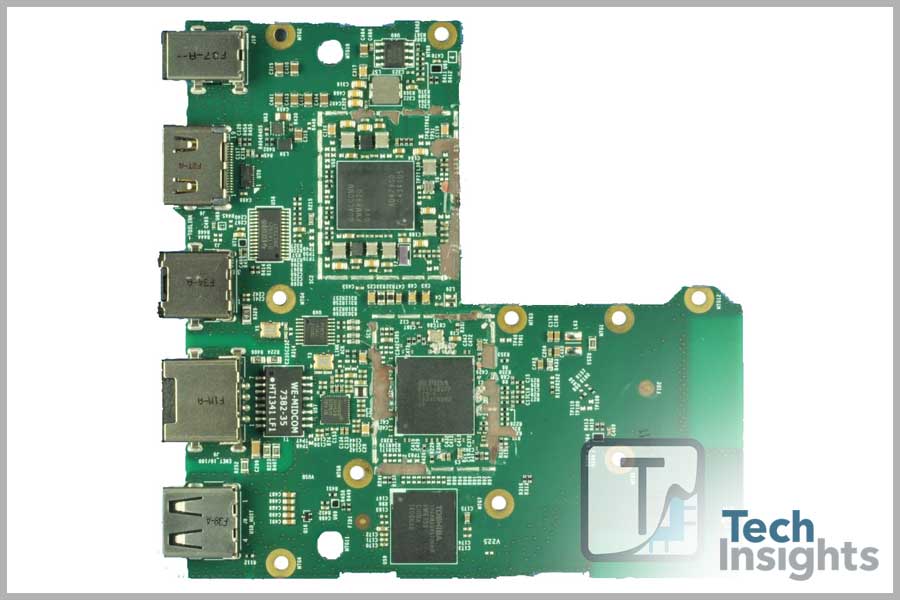
Amazon Fire TV Boards Side 1
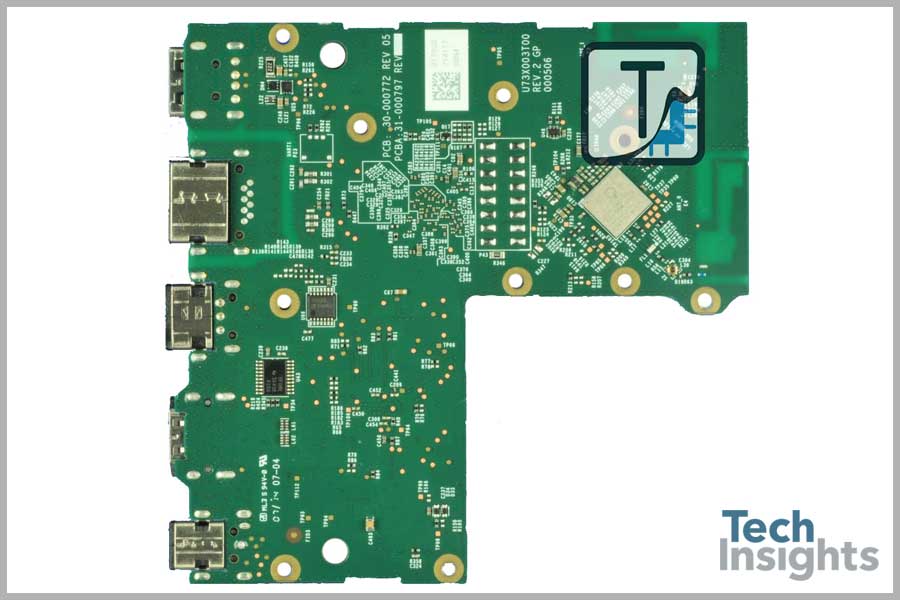
Amazon Fire TV Boards Side 2
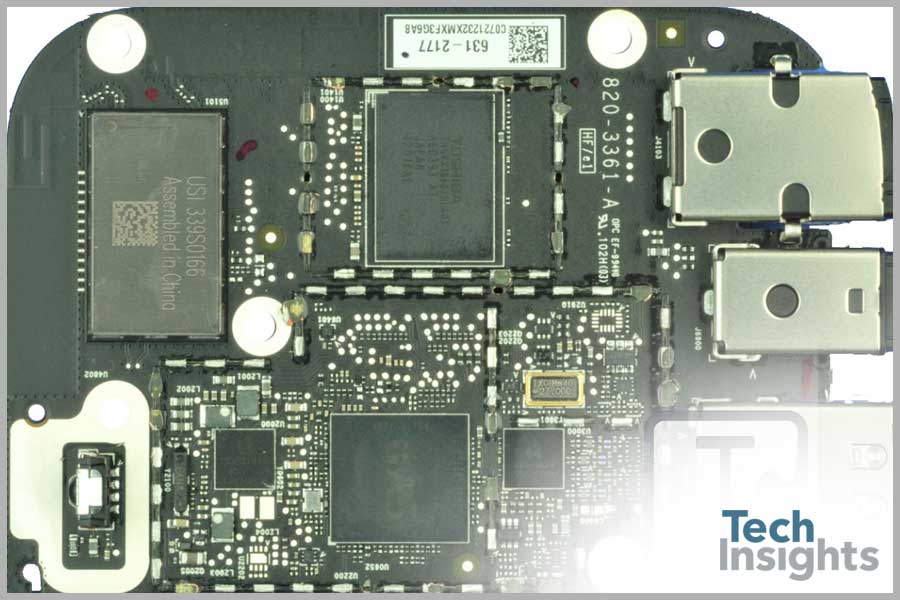
Apple TV Board Side 1
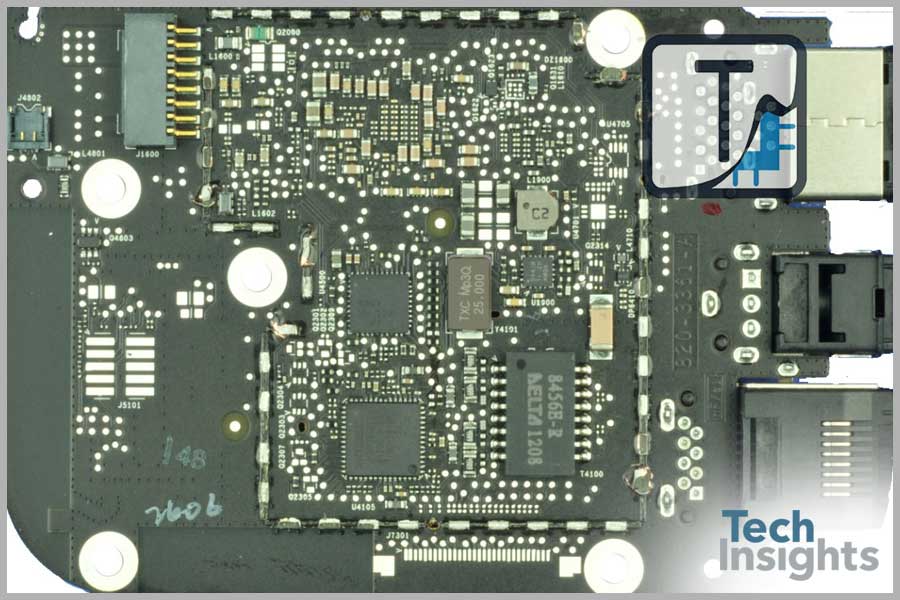
Apple TV Board Side 2
Apple TV & Amazon Fire TV Closing Thoughts
While the Apple TV had an estimated bill of materials cost of $70 in July 2012, supply chain efficiencies and other cost reductions should have reduced that number significantly by now. Combine this with a constant retail price of $99, and you get a business case that improves over time.
The Amazon Fire TV outperforms the Apple TV in features and speed, but that is hardly a surprise given it launched just over two years after the Apple TV. Apple has not been standing still and there are rumors of a new Apple TV with Kinect type remote-free UI support.
Cost Methodology Change
After receiving consistent feedback from our customer base, we brought in someone with knowledge on mechanical costing to make recommended changes to our mechanical cost model. Up to this point, our model calculated cost based on weight and material composition, and then multipliers were used for various types of processing (fabrication techniques, coatings, processes, processing operations, etc.). While our new model calculates base cost from weight and material composition, multipliers are only used for formation techniques (moldings, extrusions, stampings, etc.). For coatings, our new model uses a base coating cost and takes into account the part area to be coated along with a process yield. Likewise, for processing operations (inserts, drilled holes, heat staking, printings, etc.) are calculated based off a base cost, quantity of occurrence and yield factor. The results are now much closer to feedback received.





